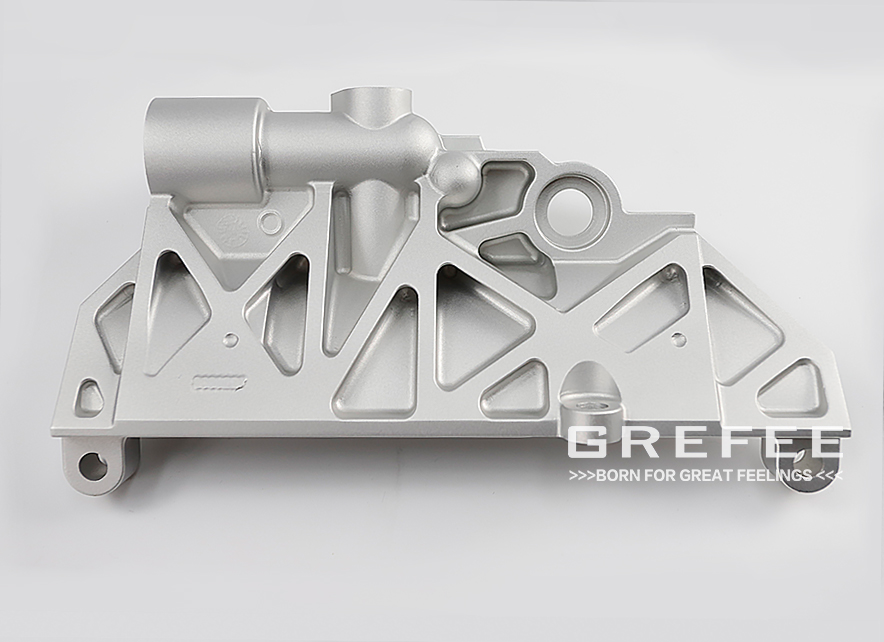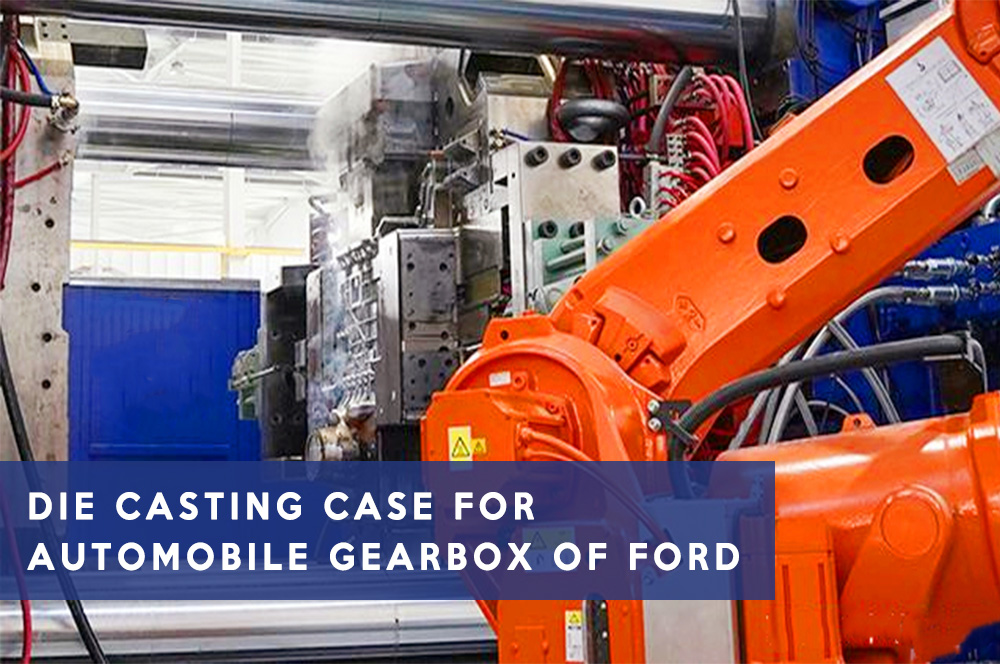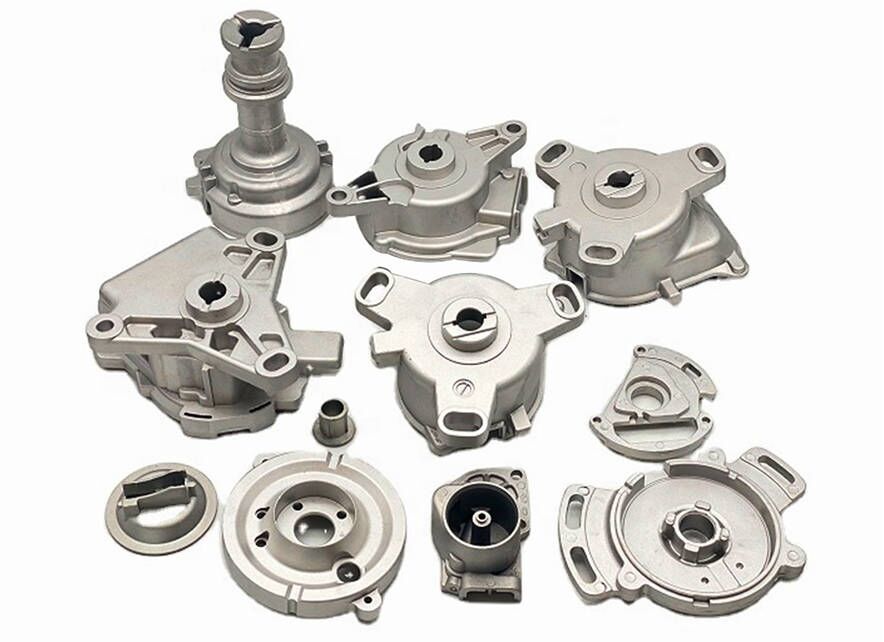Details should to know for better making aluminum alloy die casting

Posted on : April 12 , 2022 By GREFEE

Details should to know for better making aluminum alloy die casting
The fusing and pouring steps are the main parts of aluminum alloy die casting. Strictly controlling the whole process of these two steps plays a critical role in preventing pinholes, impurities, undercasting, cracking, air holes, shrinkage porosity, and more.
Molten aluminum has a great tendency of the absorption of hydrogen, oxidization ability, very easy to dilute iron properties, so it must carry out simple and safe preventions to obtain the qualified aluminum alloy die casting parts in the welding and pouring processes.
1. burden of aluminum alloy and quality control
The fine molten aluminum can not be achieved without fine raw material, and it has to be scientifically stored and appropriately managed, or the quality of aluminum alloy will be affected. The practical experience shows that less strictly managing the raw material will lead to volumes of the aluminum alloy die casting parts scrapped (including metal material and auxiliary material)
Standardized chemical compositions and structures of raw material: specific requirements are as follows:
- Except for the analysis of compositions and impurities of alloy bars, it also needs to examine the macroscopic structure and fractures. Based on the practice, it shows that it is hard to obtain compact aluminum alloy die casting parts using liquid aluminum that has porosity, pinholes, and bubbles, or even leads to the whole batch or whole furnace production being scrapped.
- When researching the impact of the aluminum-silicon alloy bars on aluminum pinholes, researchers found no pinholes when using a fusing pure pouring sand mold briquette. After adding the low intensity and unqualified aluminum-silicon alloy bars, the pinholes situation worsens and has large grain due to the heredity of the material. Aluminum-silicon alloy and the heredity increase as the content increases and is remarkable when the content of silicon is up to 7%. Increasing the silicon content to eutectic composition will lower the heredity bit. To reduce the defects resulting from the burden of heredity, it has to choose aluminum bars with high-quality metallurgy, master alloy, and other burdens. Specific standards are as follows:
(1) no pin holes and air holes on the fracture
the pinholes should be within level three, and local (not exceed 25%examined area) should not exceed level three. Parts that exceed level three have to be re-fused to reduce the pinholes. The method of it is similar to the one of aluminum alloy fusing. The pouring temperature should not exceed 660 degrees, and for those aluminum bars and alloy bars with large original grains, solidifying them quickly and refined grains by a lower ingot mold temperature.
(2) Burden treatment
The burden should be sandblasted before use to remove the rusting, grease, and dirt on the surface. Aluminum bars and metal scrap returns that have not been put for long and with no dirt on the surface do not need to sandblast but eliminate the iron filter screen, inserts, and other substances mixed in the burden. All the burden should be pre-heated before going into the furnace for drying, which shortens the fusing time within 3 hours.
(3) Management and storage of the burden
Proper management and store of burden are of great significance to the alloy quality assurance. The burden should be stored in the dry warehouse with no big temperature change.
2. Preparation of crucible and fusing tools
- Aluminum alloy crucible casting often applies iron crucibles and steel casting, as well as steel plate welding crucibles.
- The new crucibles and long-term unused old crucibles should be sandblasting before using, and heat to 700-800 degrees, and maintained for 2-4 hours to burn the combustible material and dry the water which adheres on the internal walls of crucibles. Carefully clean the interior walls of the crucibles when the temperature is lower than 300 degrees and start sandblasting when the temperature is not less than 200 degrees.
- The crucibles should be pre-heated to dark red (500-600 degrees) and maintained for 2 hours. Before the new crucibles are fused, it is better to melt the returning burden in the same brand first.
- Preparation of the fusing tools: Bell jar, die casting ladle, string ladle, ladle, and ingot mold should be pre-heated and coated with protective material at a temperature lower than150-200 degrees, then dried at 200-400 degrees for over 2 hours. Removing the oxide, and fluoride on the surface after using (sandblasting is better).
3. Fusing temperature control
Too low fusing temperature will affect the dissolution of alloys and the exhaustion of gas and impurities from segregation, cold-shut, and undercasting. Besides, improperly feeding of casting parts due to the shortage of heat at the feed head.
There is information that shows that the fusing temperature of all aluminum alloys should not be less than 705 degrees and should stir. High melting temperature not only wastes energy but also leads to more hydrogen absorption, and larger grains. The worsened aluminum oxidization, the burning of the alloy components, which decreases the mechanical ability of alloys, mechanical machining ability, casting ability, modification effects, and airtightness of aluminum alloy die casting parts.
The practices proved that heat the liquid alloy up to a suitable temperature and stir properly to facilitate the dissolution of all alloy elements (especially the refractory metal elements). Lower the temperature to pouring temperature after removing the dross so that the segregation degree is the least and molten hydrogen is the less, too.
This helps obtain uniform, compact alloys with high mechanical ability, for the temperature of molten aluminum cannot be evaluated visually. Thus, no matter what type of furnace need to use a temperature measuring meter and should be inspected and repaired regularly. The thermowell should be cleaned by the metal brush regularly with a protective coating should be outside to assure the accuracy of the temperature result and longer service life.
4. Fusing time control
To reduce the oxidization and air trapping issues in the molten aluminum, and the dilution of iron, the time for molten aluminum in the furnace should be minimized as much as possible, which should not be over 4 hours from the beginning to the end. The time for metal die casting should not be over 6 hours, and the time for die casting should not be over 8 hours.
To accelerate the fusing process, the medium sized returning burden and aluminum- silicon master alloy, with lower melting point should be put into first to form the molten pool as soon as possible, then put the large returning burden and pure aluminum bars to make them penetrate slowly and expand the molten pool to accelerate the melting process.
After the primary parts have been molten, adding less master alloys which has high melting point and raising the temperature plus stir to accelerate the melting. Adding easily oxidized alloy elements when cooling to reduce the loss.
5. Transportation and pouring of melt
Although the intensity of solid oxidized aluminum and molten aluminum is similar, the solid oxidized aluminum needs a long time to get to the bottom of the crucible after getting into the molten aluminum. The alumina membrane formed from the oxidized molten aluminum, which contacts with the molten aluminum is compact, whereas the side contact with air is porosity with a large number of small holes whose diameter is from 60-100A.
The cover area is large, and the adhesive ability is strong. Therefore, it is easy to adhere to the steam and has a floating tendency. If the gravity difference between the oxide film and molten aluminum is low, then the sinking speed of solid aluminum in the melt is slow and is hard to remove from the melt. The bubbles formed in the aluminum die casting parts are too confused. Thus, it is important to stir less and avoid contact between the molten metal and air in the transportation of molten aluminum.
When using a tilting crucible to transport the melt, to avoid contact with air, the ladle should not be close to the burner and be inclined to make the melt flow along the sidewall of the ladle rather than pouring straight down to the bottom, causing the stir and flash.
The correct pouring method is one of the essential factors for obtaining high-quality aluminum die casting parts. From practice experience, the below items are effective to reduce or avoid defects.
- Check the furnace temperature, ladle volume, how dry the surface coating is, and whether the preparation of tools is standard or not before pouring. The metal pouring cup should be placed on the sand mold 3-5 minutes earlier. The temperature now should not be higher than 150 degrees. Too early operation or too high temperature will generate a large amount of gas, which has risks of explosion when pouring.
- No pouring allowed when has draught, melt strongly oxidized, and burning that lead to the oxide lamination of casting.
- When obtaining the melt from the crucible, it should peel the surface oxide membrane or flux layer gently to soak the ladle into the melt. Use the wide mouth of the ladle to scoop the melt and then lift the ladle.
- Hand ladling should not be flat. The steps should be balanced and don’t lift the ladle too high. The liquid metal surface in the ladle should be flat.
- When it is about pouring, the slags in the ladle should be cleaned to avoid the slag and oxide skin mixing into the casting when pouring.
- In pouring, the melt flow should be balanced without interruption. Forbids to pour straight down to the bottom hole. The pouring head should be filled out from beginning to end. The pouring speed should be controlled properly to avoid the stir. Generally, the velocity should be slow at the beginning then increases speed when the melt fills smoothly, and keep this state throughout the process.
- In pouring, the ladle nozzle and ladle head should be close with no more than 50 mm to avoid over oxidization.
- The pouring cup with block. The block should not be pulled too early. After the melt fills out the pouring cup, oblique drag the block to avoid the vortex in pouring.
- The melt that is 60 mm lower than the bottom of the crucible is not suitable for pouring aluminum die casting parts.

Try GREFEE now,for free
We keep your uploaded files confidential and secure.




